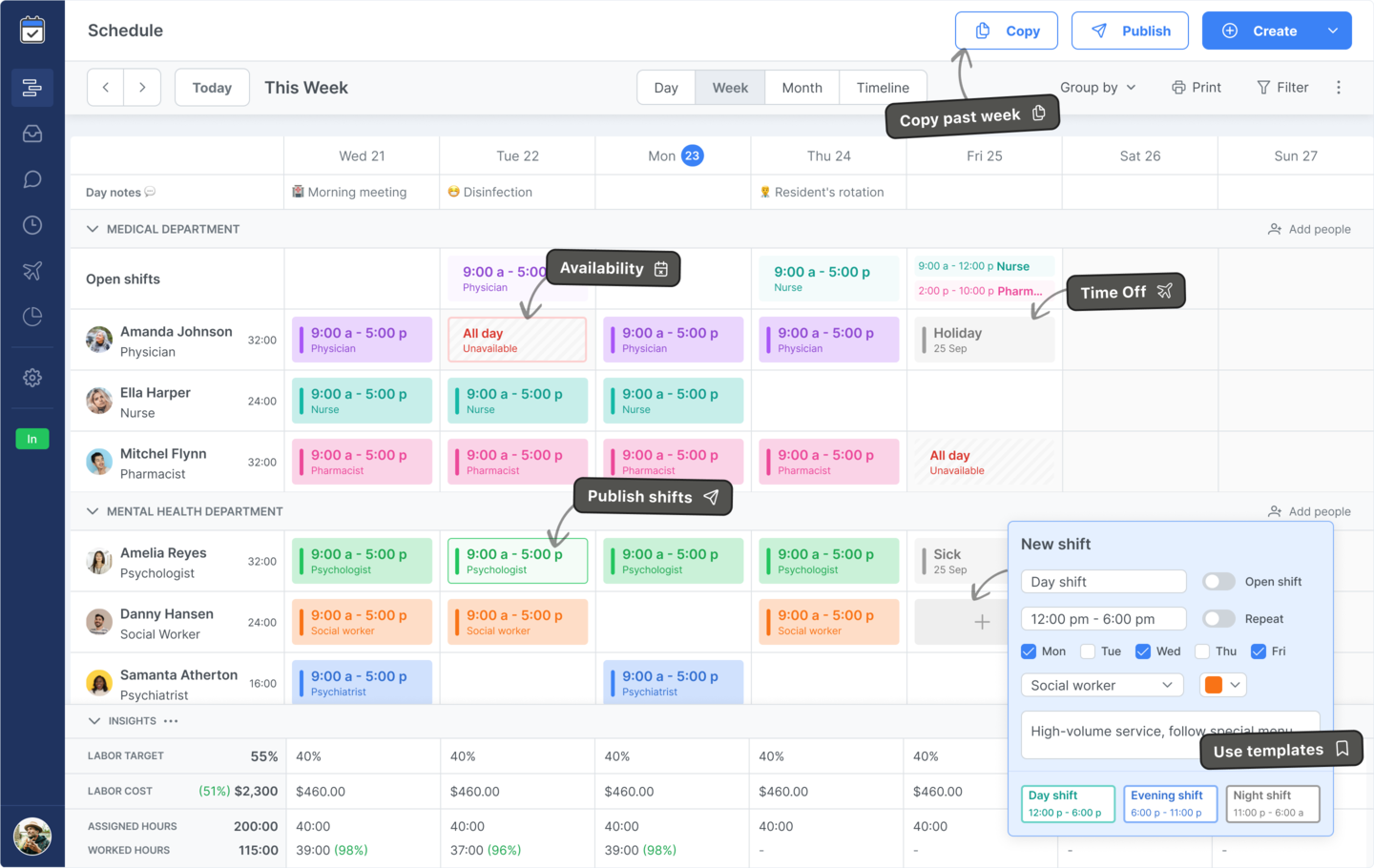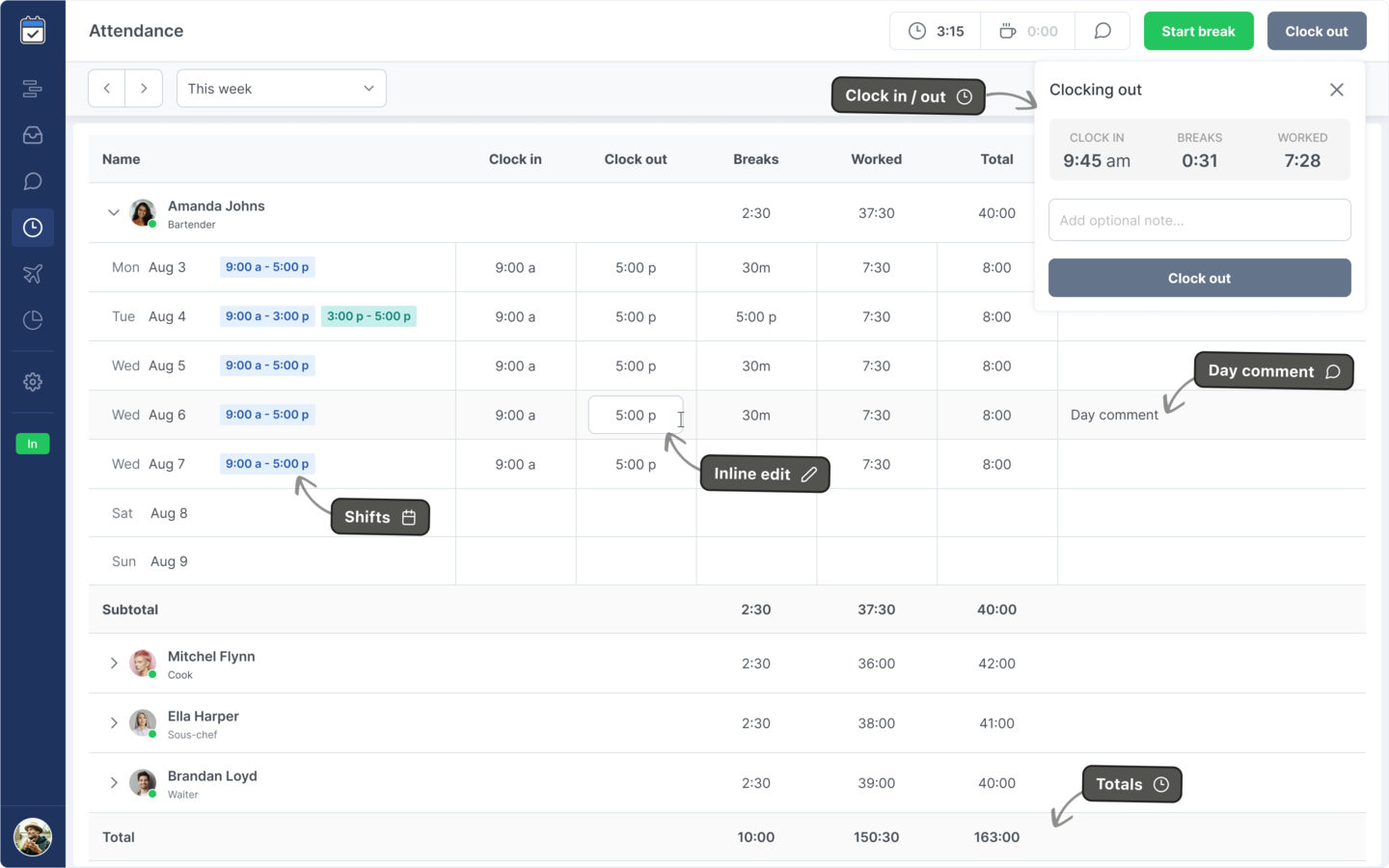A truck inspection checklist is an essential tool for commercial drivers, fleet managers, and maintenance teams to systematically verify that trucks meet safety standards and regulatory requirements. Regular inspections help prevent breakdowns, reduce accidents, and ensure compliance with Department of Transportation (DOT) regulations.
Whether you're conducting daily pre-trip inspections, periodic maintenance checks, or preparing for DOT audits, this guide provides a comprehensive template and best practices to keep your fleet safe and compliant.
Why truck inspections matter
Truck inspections are not just regulatory requirements - they're critical safety measures that protect drivers, cargo, and other road users. A systematic inspection routine identifies mechanical issues before they escalate into costly breakdowns or dangerous failures on the road.
The Federal Motor Carrier Safety Administration (FMCSA) mandates that commercial motor vehicles undergo regular inspections. Drivers must complete a Driver Vehicle Inspection Report (DVIR) for each vehicle operated, documenting any defects or deficiencies discovered during pre-trip and post-trip inspections.
Beyond compliance, regular inspections extend vehicle lifespan, reduce maintenance costs, minimize downtime, and protect your company from liability. A well-maintained fleet operates more efficiently, saves fuel, and maintains better resale value.
Types of truck inspections
Different inspection types serve different purposes in fleet management. Understanding when and how to conduct each type ensures comprehensive vehicle maintenance and compliance:
Pre-Trip Inspections. Conducted before each trip, these daily checks ensure the vehicle is roadworthy. Drivers examine critical safety components including brakes, tires, lights, steering, and fluid levels. Required by DOT regulations for all commercial vehicles.
Post-Trip Inspections. Performed after completing a trip to identify any issues that developed during operation. Drivers report defects that need attention before the vehicle's next use, helping maintenance teams prioritize repairs.
Periodic/Preventive Maintenance Inspections. Scheduled inspections based on mileage or time intervals (monthly, quarterly, annually). These comprehensive checks go deeper than daily inspections and are typically performed by certified mechanics.
DOT Inspections. Official inspections conducted by authorized DOT inspectors, either at weigh stations, roadside checks, or scheduled audits. These thorough examinations verify compliance with all federal safety regulations.
Annual Inspections. Required by law in many jurisdictions, annual inspections are comprehensive evaluations of all vehicle systems. They must be performed by qualified inspectors and documented with detailed reports kept on file for regulatory purposes.
What to include in your truck inspection checklist
A comprehensive truck inspection checklist should cover all critical vehicle systems and components. Below are the essential areas that every inspection should address:
Engine Compartment. Check oil level and condition, coolant level, power steering fluid, windshield washer fluid, belts for cracks or fraying, hoses for leaks or damage, battery condition and connections, air filter condition.
Brake System. Inspect brake pads and rotors for wear, check brake fluid levels, test parking brake function, examine air brake components (if applicable), verify brake lights work properly, check for air leaks in brake lines, inspect slack adjusters.
Tires and Wheels. Measure tire tread depth (minimum 4/32" for steering axles, 2/32" for other axles), check tire pressure on all tires including spare, look for cuts, cracks, or bulges, verify lug nuts are tight and present, inspect wheels for damage or cracks, check valve stems and caps.
Lights and Electrical. Test all headlights (high and low beam), verify turn signals and hazard lights, check brake lights and reverse lights, inspect clearance and marker lights, test horn functionality, ensure reflectors are clean and secure, verify license plate lights work.
Steering and Suspension. Check power steering fluid level, test steering wheel play (should not exceed 2 inches), inspect steering linkage for damage or looseness, examine suspension components for wear, check shock absorbers for leaks, verify steering components are secure.
Cab and Interior. Test windshield wipers and washers, inspect windshield for cracks or damage, check all mirrors for proper adjustment and condition, verify seat belts are functional, test gauges and warning lights, ensure emergency equipment is present (fire extinguisher, reflective triangles, first aid kit).
Exterior and Frame. Walk around vehicle checking for body damage, inspect frame for cracks or rust, check fuel tank and straps for security, verify exhaust system is secure with no leaks, examine coupling devices (fifth wheel, pintle hooks), inspect mud flaps and fenders.
Trailer (if applicable). Check trailer connection is secure, inspect landing gear, verify trailer lights function properly, examine cargo securement, check trailer tires and wheels, inspect door seals and hinges, verify load is properly distributed.
How to create your own truck inspection checklist
Start with regulatory requirements for your jurisdiction. Review DOT regulations and state-specific requirements to ensure your checklist meets all legal standards. Consult with your insurance provider as they may have additional requirements for coverage.
Tailor the checklist to your specific fleet. Different truck types have different inspection needs - a dump truck checklist differs from a refrigerated trailer inspection. Consider your vehicles' age, typical routes, cargo types, and operating conditions when designing your form.
Organize the checklist logically, following a natural inspection flow. Many drivers prefer a walk-around pattern: start at the driver's door, move around the vehicle clockwise, then check the interior. This systematic approach prevents missed items.
Make the checklist easy to complete quickly but thoroughly. Use clear language, include visual aids if helpful, and provide checkboxes for quick marking. Digital checklists with mobile apps can streamline the process, automatically timestamp entries, and store photos of defects.
Sample Truck Inspection Checklist Template
Below is a comprehensive DOT-compliant truck inspection checklist covering pre-trip and post-trip requirements. Customize this template to match your specific fleet needs and regulatory requirements.
TRUCK INSPECTION CHECKLIST Vehicle Information: Truck Number/ID: _________________________ Make/Model: ______________________________ License Plate: ___________________________ Odometer Reading: ________________________ VIN: _____________________________________ Inspection Details: Date: ___________________________________ Time: ___________________________________ Inspector Name: __________________________ Driver License Number: ___________________ Inspection Type: ☐ Pre-Trip ☐ Post-Trip ☐ Periodic Location: ________________________________ Instructions: Mark each item as OK, Defect, or N/A. Describe any defects in the notes section. ENGINE COMPARTMENT ☐ Engine oil level and condition ☐ Coolant/antifreeze level ☐ Power steering fluid level ☐ Windshield washer fluid level ☐ Transmission fluid level (if accessible) ☐ Drive belts (no cracks, proper tension) ☐ Hoses and clamps (no leaks, cracks, or looseness) ☐ Battery terminals and cables (clean, tight, no corrosion) ☐ Air filter condition ☐ No visible leaks (oil, coolant, fuel) Notes: _____________________________________ ____________________________________________ BRAKE SYSTEM ☐ Brake fluid level ☐ Brake pads/shoes (adequate thickness) ☐ Brake drums/rotors (no excessive wear or scoring) ☐ Brake lines and hoses (no leaks, cracks, or damage) ☐ Parking brake holds vehicle securely ☐ Brake lights functional ☐ Air brake pressure (if applicable): _____ PSI ☐ Air brake governor cut-in/cut-out: _____/_____ ☐ Air compressor operation ☐ Slack adjusters (proper adjustment, no more than 1" travel) ☐ Spring brakes function properly ☐ No audible air leaks Notes: _____________________________________ ____________________________________________ TIRES AND WHEELS ☐ Tire pressure (all tires including spare): LF: _____ RF: _____ LR: _____ RR: _____ Spare: _____ ☐ Tire tread depth adequate (minimum 4/32" steer, 2/32" other) ☐ No cuts, cracks, bulges, or exposed cords ☐ Tire sidewalls in good condition ☐ No mismatched or regrooved tires on steering axle ☐ Valve stems and caps present and intact ☐ All lug nuts present and tight ☐ Wheels and rims (no cracks, damage, or excessive rust) ☐ Wheel bearings (no excessive play or noise) ☐ Hub oil seals (no leaks) Notes: _____________________________________ ____________________________________________ LIGHTS AND ELECTRICAL ☐ Headlights (high and low beam) ☐ Turn signals (front, side, rear) ☐ Hazard/4-way flashers ☐ Brake lights ☐ Tail lights ☐ Reverse/backup lights ☐ Clearance/marker lights ☐ Identification lights ☐ License plate light ☐ Reflectors clean and secure ☐ Horn functional ☐ Dash gauges operational ☐ Warning lights functional Notes: _____________________________________ ____________________________________________ STEERING AND SUSPENSION ☐ Power steering fluid level adequate ☐ Steering wheel play (not more than 2" play at rim) ☐ Steering column secure ☐ Steering linkage (no loose or worn parts) ☐ Pitman arm and drag link secure ☐ Tie rod ends secure ☐ Suspension springs (no broken leaves or cracks) ☐ Spring hangers and mounts secure ☐ Shock absorbers (no leaks, properly mounted) ☐ U-bolts and torque arms tight ☐ Axle seals (no leaks) Notes: _____________________________________ ____________________________________________ CAB AND INTERIOR ☐ Windshield (no cracks, chips, or discoloration in driver's view) ☐ Windshield wipers (blades in good condition, operate properly) ☐ Windshield washer fluid sprays properly ☐ All mirrors present, secure, and properly adjusted ☐ Driver's seat secure and adjustable ☐ Seat belt present and functional ☐ Gauges operational (speedometer, oil pressure, temperature, etc.) ☐ Air pressure gauge (if applicable) shows proper build-up ☐ Emergency equipment present and accessible: ☐ Fire extinguisher (fully charged, not expired) ☐ Reflective triangles (3) ☐ First aid kit ☐ Required documents present (registration, insurance, permits) ☐ Heater/defroster operational ☐ Air conditioning functional (if applicable) Notes: _____________________________________ ____________________________________________ EXTERIOR AND FRAME ☐ Frame (no cracks, bends, or excessive rust) ☐ Body panels secure and undamaged ☐ Doors, hinges, and latches functional ☐ Fuel tank(s) secure with no leaks ☐ Fuel tank straps and mounting secure ☐ Fuel cap present and sealing properly ☐ Exhaust system secure with no leaks ☐ Exhaust mounting brackets secure ☐ Driveshaft secure (no excessive play) ☐ Mud flaps and fenders secure ☐ License plates visible, clean, and properly mounted ☐ DOT inspection sticker current and visible Notes: _____________________________________ ____________________________________________ COUPLING DEVICES (if applicable) ☐ Fifth wheel (properly lubricated, no cracks) ☐ Locking jaws secure trailer kingpin ☐ Release lever in locked position ☐ Safety latch engaged ☐ Slider (if applicable) locked in position ☐ Pintle hook (if applicable) secure and operational ☐ Electrical and air line connections secure ☐ Glad hands sealed properly ☐ Safety chains present and attached (if applicable) Notes: _____________________________________ ____________________________________________ TRAILER INSPECTION (if applicable) ☐ Trailer connection secure ☐ Landing gear fully raised and secured ☐ Trailer lights functioning (all positions) ☐ Trailer brakes functional ☐ Trailer tires and wheels inspected (same criteria as truck) ☐ Cargo doors/gates secure and undamaged ☐ Cargo properly secured and distributed ☐ Load straps/chains tight with no damage ☐ Trailer frame and floor in good condition ☐ Reflective tape present and visible ☐ DOT numbers visible Notes: _____________________________________ ____________________________________________ OPERATIONAL CHECK ☐ Engine starts normally ☐ Transmission shifts smoothly ☐ Clutch engages/disengages properly (if applicable) ☐ Brakes respond appropriately ☐ No unusual noises or vibrations ☐ All gauges reading normally ☐ No warning lights illuminated Notes: _____________________________________ ____________________________________________ DEFECTS FOUND: (List all defects requiring repair before operation) ____________________________________________ ____________________________________________ ____________________________________________ ____________________________________________ OVERALL ASSESSMENT: ☐ Vehicle is safe to operate ☐ Vehicle requires repairs before operation ☐ Vehicle is out of service (critical defects) CERTIFICATION: I certify that the above inspection was conducted in accordance with DOT regulations and company policy. All defects noted have been accurately reported. Inspector Signature: _________________________ Date: _________________ Time: _______________ MAINTENANCE REVIEW (to be completed by maintenance personnel) Repairs Completed: ☐ Yes ☐ No ☐ N/A Description of Repairs: ____________________________________________ ____________________________________________ Mechanic Name: ______________________________ Mechanic Signature: _________________________ Date Completed: _____________________________ Vehicle Released for Service: ☐ Yes ☐ No Manager Signature: __________________________
Disclaimer
Important: This truck inspection checklist template is provided for informational purposes only. While it follows DOT regulations and industry best practices, you should always verify that your checklist meets all federal, state, and local requirements specific to your operation and jurisdiction.
This template does not constitute legal advice or replace professional mechanical inspection services. Vehicle safety requirements vary by state, vehicle type, and cargo. Always consult with qualified mechanics, safety professionals, and legal advisors to ensure full compliance with applicable regulations. No legal liability or responsibility is accepted by or on behalf of Everhour, Shifts, or their partners for any errors, omissions, or statements within this document. Everhour and Shifts accept no responsibility for any loss, damage, or inconvenience caused as a result of reliance on this template.
Best practices for truck inspection implementation
Train all drivers thoroughly on proper inspection procedures. Don't assume experienced drivers know what to look for - provide clear guidance on identifying defects, understanding severity levels, and proper documentation. Many accidents result from inspections being rushed or completed carelessly.
Make inspections convenient and routine. Keep inspection forms easily accessible in each vehicle, provide good lighting at inspection areas, and allocate sufficient time in schedules for thorough checks. Drivers who feel rushed will skip steps or mark boxes without actually inspecting.
Implement a clear defect reporting and repair process. Drivers need to know exactly how to report problems, who reviews reports, and how quickly issues will be addressed. Use a tracking system to ensure defects don't fall through the cracks and vehicles don't return to service with unresolved safety issues.
Conduct regular audits of inspection reports and practices. Review completed checklists for thoroughness, verify that identified defects are being repaired promptly, and observe random inspections to ensure drivers are following procedures correctly. Provide feedback and additional training when needed.
Benefits for fleet safety and operations
Systematic truck inspections dramatically reduce roadside breakdowns and delays. Catching small problems early prevents them from becoming expensive repairs or dangerous failures. Fleet managers report that consistent inspection programs reduce maintenance costs by 15-25% through early problem detection.
Regular inspections improve DOT compliance and reduce violation risks. Clean inspection records contribute to better safety ratings, which can lower insurance premiums and make your company more attractive to shippers. Many contracts require minimum safety ratings, making compliance a business necessity.
Documented inspections provide legal protection. In the event of an accident, detailed inspection records demonstrate your company's commitment to safety and proper maintenance procedures. This documentation can be crucial in liability disputes and insurance claims.
Well-maintained vehicles perform better, use less fuel, and last longer. Drivers report greater confidence and job satisfaction when operating well-maintained equipment. Lower turnover and better driver retention result from providing safe, reliable vehicles.
The bottom line
A comprehensive truck inspection checklist is not just a regulatory requirement - it's a fundamental safety tool that protects your drivers, cargo, and business. Consistent, thorough inspections prevent breakdowns, reduce costs, ensure compliance, and most importantly, save lives.
Start with our DOT-compliant template, customize it for your specific fleet needs, train your team properly, and make inspections a non-negotiable part of your operation. The few minutes spent on each inspection are a small investment with enormous returns in safety and efficiency.





